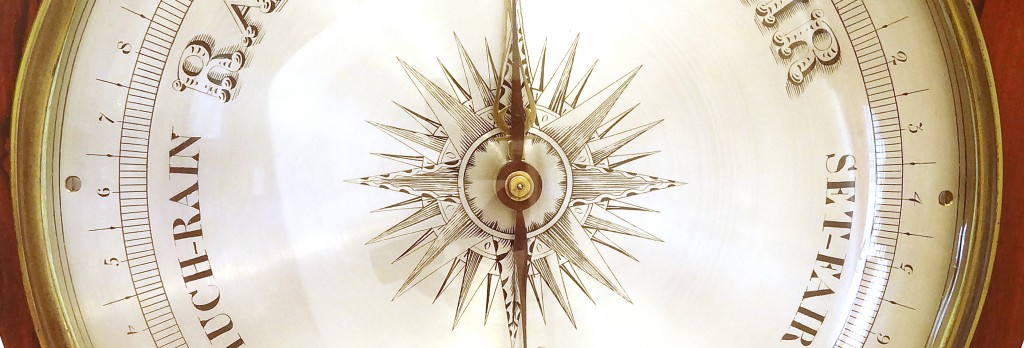
Barometers
The domestic stick barometer was developed late in the seventeenth century. In this simple mechanism, the height of a column of mercury is measured against a register plate at the top. Barometers for marine use were fitted with gimbals so that they would remain upright in spite of a ship rolling and the tubes were designed to prevent the mercury surging. Wooden barometers were replaced by models with brass cases as they suffered less from the damp when at sea.
The banjo barometer was developed with an extended scale allowing for more accurate readings to be made. Here, a float rests on a long tube of mercury. This in turn is attached to a wheel which operates the hand. As the mercury column rises or falls, the hand turns.
Aneroid barometers are less susceptible to shock and the transport problems associated with mercury instruments. Within the mechanism is a sealed metal chamber which has flexible upper and lower surfaces. As the pressure changes, so the height of the chamber varies which, in turn, moves an index pointer. A barograph is a recording aneroid barometer.
Our prices include a 3-year guarantee and dleivery within the UK mainland.